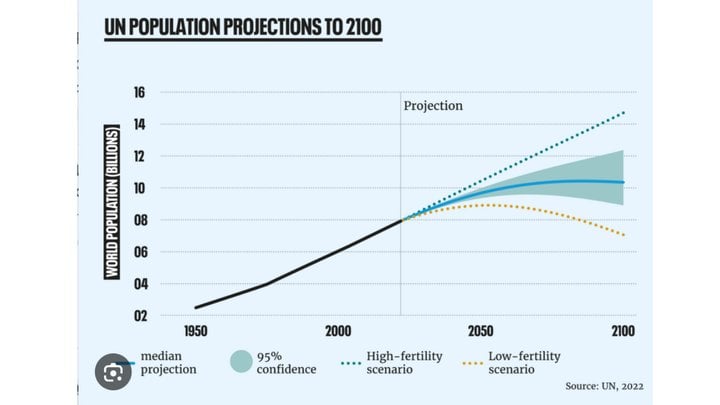World population crisis
The UN Population Division report of 2022 projects world population to continue growing after 2050, although at a steadily decreasing rate, to peak at 10.4 billion in 2086, and then to start a slow decline to about 10.3 billion in 2100 with a growth rate at that time of -0.1%.
This estinmate is dropping almost every year. If the worlds population growth goes into reverse
How will we cope with a shrinking workforce, an aging population, and potential economic challenges, but also potentially lower resource consumption and environmental impact
This estinmate is dropping almost every year. If the worlds population growth goes into reverse
How will we cope with a shrinking workforce, an aging population, and potential economic challenges, but also potentially lower resource consumption and environmental impact





